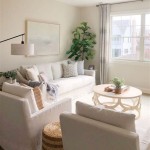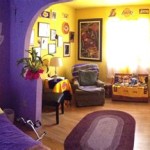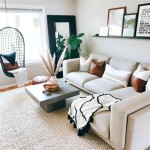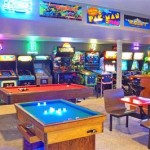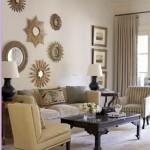How To Decorate Around An Ugly Recliner
The recliner, often lauded for its comfort and relaxation-inducing capabilities, can sometimes present a design challenge. Older models, inherited pieces, or budget-friendly acquisitions may not always align with one's aesthetic preferences. However, an “ugly” recliner need not be a permanent eyesore. Strategic decorating techniques can effectively minimize its visual impact and integrate it into a cohesive and stylish living space.
The primary goal when decorating around an unsightly recliner is to shift the focus. This involves diverting attention away from the recliner's less desirable features and drawing the eye towards other, more appealing elements within the room. This can be achieved through a combination of clever placement, textural contrasts, color manipulation, and strategic accessory selection.
Camouflage and Concealment Techniques
One of the most direct ways to address an unattractive recliner is through camouflage. This involves minimizing its visual prominence by blending it into its surroundings. The most basic approach is employing a slipcover. While a generic slipcover might offer a functional solution, a custom-fitted option is significantly more effective. Choose a fabric that complements the existing color palette of the room. Solid colors are generally safer than busy patterns, which can further highlight the recliner's shape. Consider fabrics with subtle textures, such as linen or a fine weave, to add visual interest without being overwhelming.
Another method of concealment involves strategically placing the recliner. Avoid positioning it as the focal point of the room. Instead, tuck it into a corner or alcove. This minimizes its overall visibility and allows other furniture pieces to take center stage. If possible, orient the recliner so that its least attractive angle is facing away from the main viewing area. For example, if the back of the recliner features visible wear and tear, angle it so that the side is more prominent.
Furniture placement can also play a role in diverting attention. Arrange other furniture pieces, such as sofas, armchairs, and coffee tables, in a way that creates a dynamic and engaging space. A well-placed area rug can further define the seating area and draw the eye away from the recliner. Employing the principles of visual weight can also assist in this. Visual weight refers to the perceived heaviness of an object based on its size, color, and texture. Distribute visually heavier objects, such as dark-colored artwork or large plants, strategically around the room to balance the recliner's presence.
Employing Color and Texture Strategically
Color is a powerful tool in interior design. When dealing with an unattractive recliner, it’s crucial to use color strategically to either blend it in or distract from it. If the recliner is a particularly jarring color, consider neutralizing it with complementary hues in the surrounding décor. For instance, if the recliner is a dated shade of avocado green, incorporate earthy tones such as browns, beiges, and creams into the room's color scheme. These colors will create a sense of harmony and reduce the recliner's visual impact.
Alternatively, one can leverage color to create a focal point elsewhere in the room. Employ a bold and vibrant color on an accent wall or a statement piece of furniture. This will draw the eye away from the recliner and towards the more visually appealing elements of the space. However, ensure that the chosen color complements the overall aesthetic of the room and doesn't clash with the recliner's color.
Texture is equally important. Introducing a variety of textures can add depth and visual interest to a room, effectively diverting attention from an unappealing recliner. Throws and pillows are excellent tools for this. Drape a textured throw over the recliner's back or armrest. Choose fabrics with interesting weaves, such as cable-knit, faux fur, or velvet. Scatter an assortment of pillows in varying sizes, shapes, and textures around the recliner. This will not only enhance its comfort but also add visual appeal.
Incorporate texture into other elements of the room as well. Consider adding a textured rug, such as a shag rug or a jute rug. Introduce natural elements, such as plants, wooden furniture, and woven baskets, which all contribute textural contrast and visual interest. Different textures present in a room create depth and dimension and keep a person's eye moving around the room, not stuck on one thing.
Distraction Through Accessories and Art
Accessories are the finishing touches that can transform a room from drab to stylish. When dealing with an unsightly recliner, carefully selected accessories can serve as effective distractions. A well-placed floor lamp can draw the eye upward, away from the recliner's bulk. Choose a lamp with an interesting design or a unique lampshade to make it a focal point.
Artwork is another powerful tool for distraction. Hang a large and visually striking piece of art above the recliner. Choose a piece that complements the room's color scheme and aesthetic. The artwork will immediately become the focal point, drawing the eye away from the recliner. Alternatively, create a gallery wall with a collection of smaller pieces. This will add visual interest and create a focal point that extends beyond the recliner.
Bookshelves are another excellent way to add visual interest and distraction. Position a bookshelf near the recliner and fill it with a carefully curated collection of books, decorative objects, and personal mementos. The bookshelf will serve as a visual anchor and draw the eye away from the recliner. Arrange items on the shelves in a visually appealing manner, using a mix of heights, textures, and colors. Layering items adds depth and creates a sense of visual interest. Incorporate plants, picture frames, and decorative boxes to add further visual appeal.
Other accessories that can help to distract from an unattractive recliner include decorative bowls, vases, and sculptures. Place them strategically around the room to draw the eye and add visual interest. Choose accessories that complement the room's overall aesthetic and color scheme. Remember to avoid clutter. Fewer, well-chosen accessories are more effective than a multitude of random items.
Ultimately, decorating around an “ugly” recliner is an exercise in strategic distraction and visual manipulation. By employing these techniques, one can effectively minimize the recliner's visual impact and integrate it into a cohesive and stylish living space. The recliner may still be there, but now the room holds several factors that draw the eye.

Styling Tips That Make A Difference When Decorating Living Room With Recliners In My Own Style

Styling Tips That Make A Difference When Decorating Living Room With Recliners In My Own Style

How To Design Around Ugly Lazyboy

Styling Tips That Make A Difference When Decorating Living Room With Recliners In My Own Style
Living Room Makeover Spring Home Decor

Lansing Leather Recliner Furniture

Project Redecorate Reupholster A Recliner Melly Sews

Today S Recliners Let You Kick Back In Style Livingroom Layout Living Room Furniture Arrangements
Centerpointe Communicator How To Update An Old Reclining Chair

Recliners In Design Yay Or Nay Centsational Style
Related Posts

